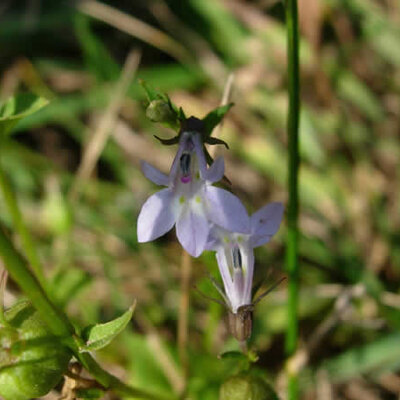
Lobelia inflata
This species grows to 30-60 cm tall and produces slender, upright stems bearing clusters of elongated lavender flowers.
These products may also be of interest to you
in bucket
For spring sowing, place seeds in a damp substrate in the fridge for 60 days to lift dormancy. Monitor regularly and place in pots if germination begins, taking care not to cover the seeds too much, as this species prefers to germinate in the light. For autumn sowing, sow lightly in trays. Cover lightly with fine soil and leave outdoors throughout the winter.
March, April, May, September, October
June, July, August, September, October
in the ground, in pot
semi-shade, sunny
fort
humus
wet, drained, fees
Lobelia inflata
mid-season
500 seeds
Lavender
From 30 to 60 cm
pointed
North America
>1800
In the 19th century, it was widely used by American doctors as an emetic to eliminate toxins. Herbalist Samuel Thomson helped popularize the medicinal use of Lobelia in the United States in the early 19th century, as did other medicinal plants such as "Hydrastis canadensis".
Herbalist Samuel Thomson
Also known as Indian Tobacco, it was used in the composition of an incense called "Hadra", sold in European pharmacies, which was reputed to stop asthma attacks. This incense also contained Cannabis sativa, Datura stramonium, Hyoscyamus niger, "Eucalyptus", H. E. of mint and saltpetre. Lobelia inflata has been studied in recent years for its ability to facilitate detoxification (tobacco, alcohol, meth...). It contains an alkaloid, lobeline, which is very close to nicotine and has a similar effect on the nervous system. This plant was smoked by the Cherokee, Iroquois, Crow and Penobscot peoples to relieve asthma and reduce tobacco use. They also used it as an emetic, analgesic and to relieve gastrointestinal and dermatological pathologies. [In the 19th century, it was widely used by doctors in the USA as an emetic to eliminate toxins. It also appears to be used in this way by some naturopaths. Mother tinctures can be made from the leaves and/or seeds. The seeds contain much more Lobeline than the leaves. Lobeline is primarily used to relieve bronchial problems, asthma, pneumonia and coughs. It is also a relaxant and anti-spasmodic. It has also been used to treat epilepsy, tetanus, diphtheria and tonsillitis. Lobelia inflata - in terms of dosage - must be used with discretion, as high doses can generate undesirable effects in some people. According to some authors, Dortmann's lobelia, Lobelia dortmanna, a plant widespread in Europe (but very rare in France) and North America, has similar medicinal qualities to Lobelia inflata.






